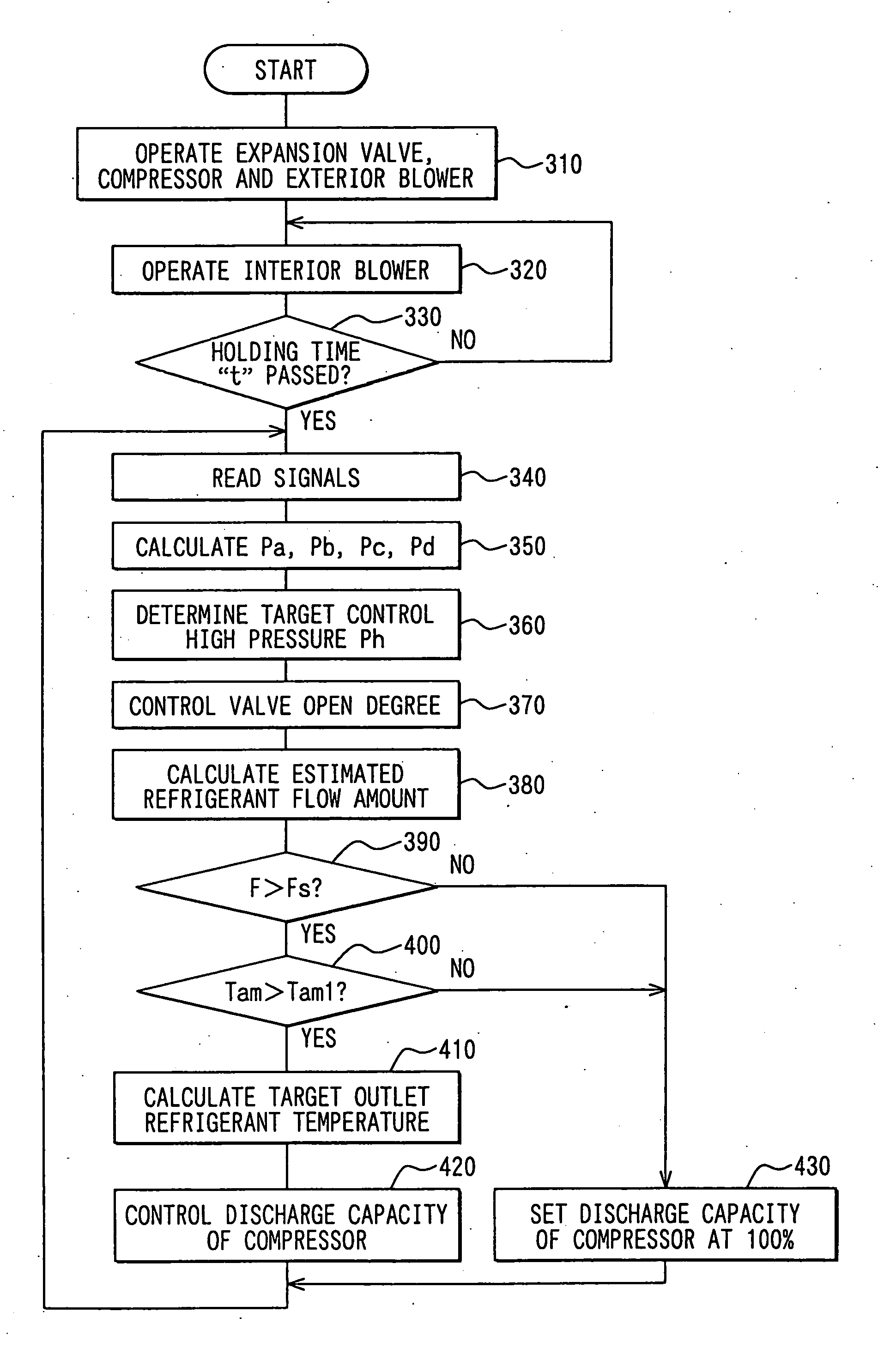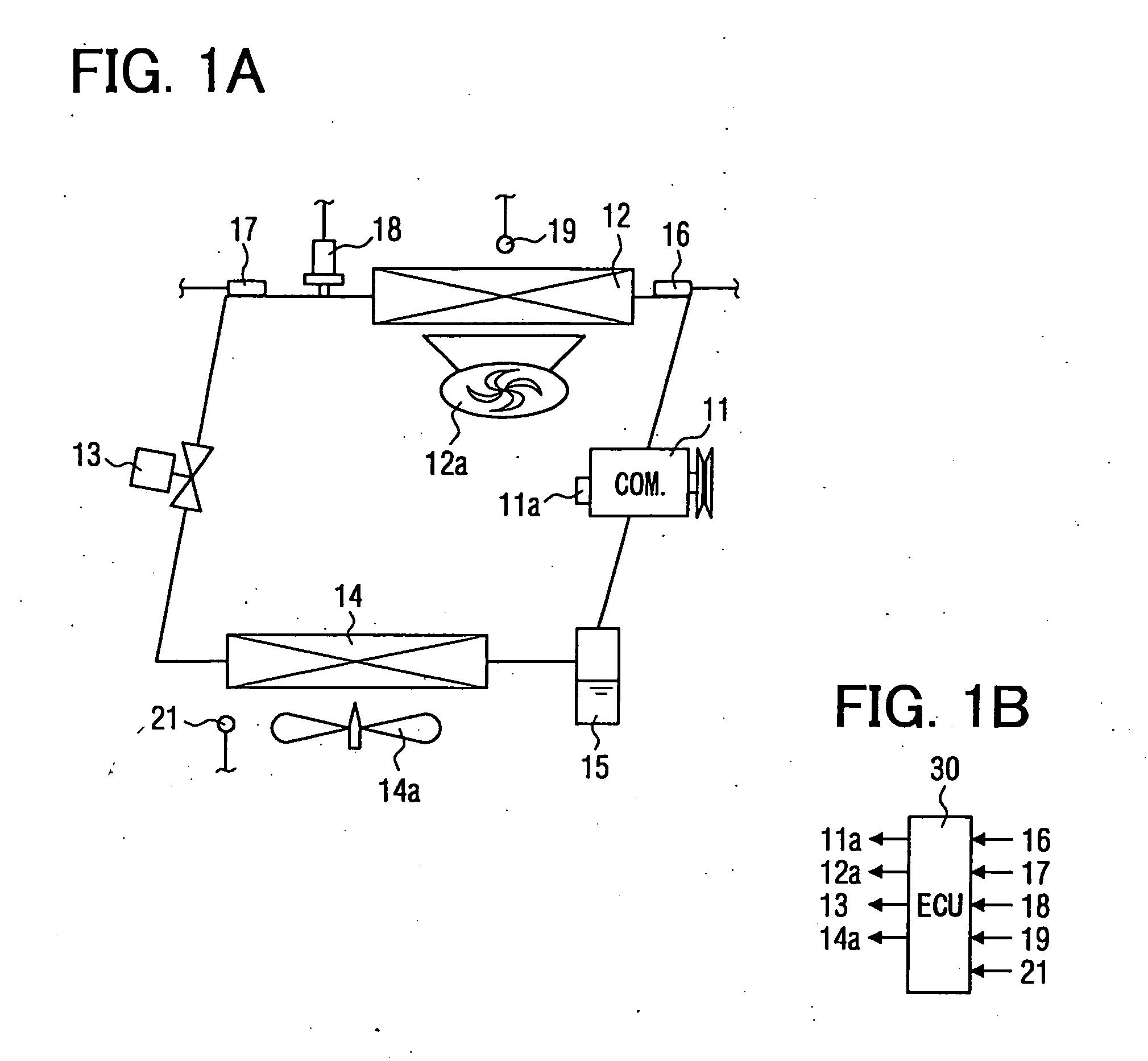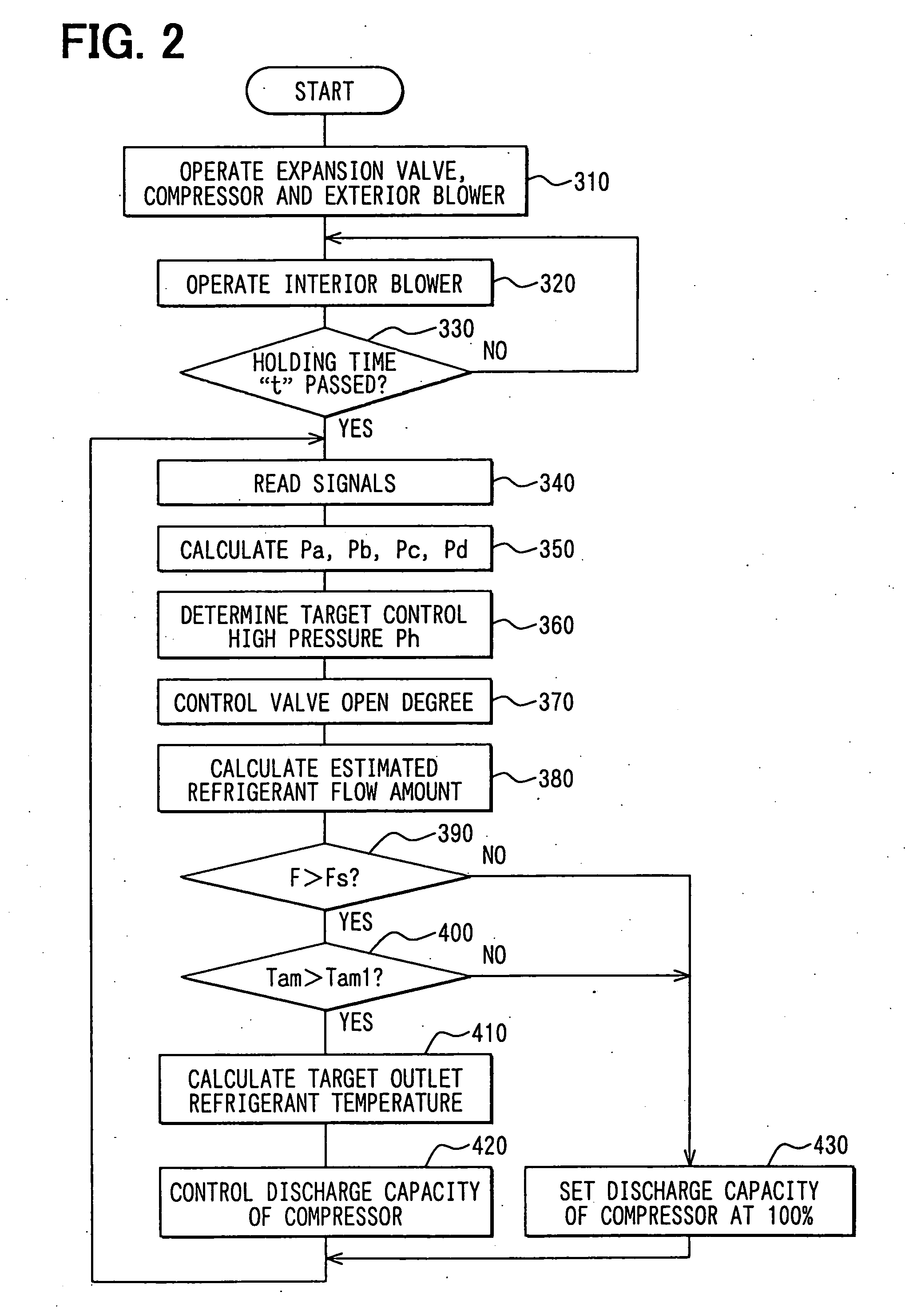Supercritical heat pump cycle system
a heat pump and cycle system technology, applied in the direction of refrigeration safety arrangement, refrigeration components, lighting and heating apparatus, etc., can solve the problems of inability to stably control the capacity of variable-discharge compressors, inability to stably control the high-pressure refrigerant pressure or the refrigerant discharge capacity of compressors, etc., to achieve stably control
- Summary
- Abstract
- Description
- Claims
- Application Information
AI Technical Summary
Benefits of technology
Problems solved by technology
Method used
Image
Examples
first exemplary embodiment
[0027] In this embodiment, a supercritical heat pump cycle system shown in FIGS. 1A and 1B is typically used for a vehicle air conditioner.
[0028] As shown in FIG. 1A, the supercritical heat pump cycle system includes a compressor 11 for compressing refrigerant, an interior heat exchanger 12 (interior gas cooler) used as a refrigerant radiator in a heating operation, an electrical expansion valve 13 used as a decompression unit, an exterior heat exchanger 14 used as a refrigerant evaporator in the heating operation, and an accumulator 15. Those components of the heat pump cycle system are connected to form a closed refrigerant cycle. As an example, carbon dioxide (CO2) is used as refrigerant in the supercritical refrigerant cycle system.
[0029] The compressor 11 draws low-temperature and low-pressure gas refrigerant and compresses the drawn refrigerant to a supercritical state having a high temperature and a high pressure. The compressor 11 is driven by using a vehicle engine as a d...
second exemplary embodiment
[0078] In the above-described first embodiment, the Interior heat exchanger 12 is used as a refrigerant radiator for heating a fluid (e.g., air) during a heating operation, in the supercritical refrigerant cycle system. In the second embodiment, the present invention is applied to a supercritical refrigerant cycle system where a cooling operation and a heating operation can be selectively switched.
[0079]FIG. 6A shows the cooling operation of the cycle system, and FIG. 7 shows the heating operation of the cycle system. In this embodiment, a switching valve 25 for switching between a refrigerant suction side and a refrigerant discharge side of the compressor 11 is provided, and a refrigerant temperature sensor 22 for detecting a refrigerant temperature at an outlet of the interior heat exchanger 14 is provided. In the cooling operation, high-pressure refrigerant flows into the exterior heat exchanger 14.
[0080] Furthermore, an inner heat exchanger 24 is provided. In the cooling opera...
PUM
 Login to View More
Login to View More Abstract
Description
Claims
Application Information
 Login to View More
Login to View More - R&D
- Intellectual Property
- Life Sciences
- Materials
- Tech Scout
- Unparalleled Data Quality
- Higher Quality Content
- 60% Fewer Hallucinations
Browse by: Latest US Patents, China's latest patents, Technical Efficacy Thesaurus, Application Domain, Technology Topic, Popular Technical Reports.
© 2025 PatSnap. All rights reserved.Legal|Privacy policy|Modern Slavery Act Transparency Statement|Sitemap|About US| Contact US: help@patsnap.com



